
Tips for Navigating S-Bahn Berlin Disruptions: 7 Expert Strategies to Stay On Track During Delays
If you count on Berlin‘s S-Bahn, you already know how a routine morning can spiral into chaos—a missed train, a sudden delay, or that cryptic announcement echoing through the platform. Figuring out how to handle S-Bahn Berlin disruptions will save you time, stress, and, honestly, sometimes your sanity. I’ve had my share of broken signals, surprise construction, and those wild days when a state visit blocks half the city. After a few years, I’ve picked up some tricks.
You don’t have to let travel headaches ruin your day or keep you from enjoying Berlin. With the right tools and a dash of local know-how, you can find alternatives and still make it to your destination—without losing your cool or emptying your wallet.
Table of Contents
- Key Takeaways
- Understanding S-Bahn Berlin Disruptions
- Types of Service Interruptions
- Common Causes of Disruptions
- How Disruptions Are Communicated
- Navigating Alternative Routes During Disruptions
- Using U-Bahn, Trams, and Buses
- Planning with Regional Trains and Ferries
- Utilizing the Tram Network
- Smart Journey Planning Tools
- Leveraging the BVG App and BVG Fahrinfo
- Navigating with Google Maps
- BVG Website and Real-Time Updates
- Optimizing Ticket Selection and Validation
- Ticket Types and Options
- Understanding Fare Zones and Tariff Zones
- Best Practices for Validating Your Ticket
- Money-Saving Tips and Discounts
- Making the Most of Deutschland Ticket and WelcomeCard
- Single Tickets Versus Tageskarte
- How to Use Monthly Passes and Travel Zones
- Ensuring Safety and Comfort While Traveling
- Tips for Crowded Situations
- Keeping Your Belongings Secure
- Exploring Berlin and Beyond Despite Disruptions
- Sightseeing and Day Trips Around Berlin
- Visiting Potsdam and Sanssouci Palace
- Insider Advice for Navigating Berlin Public Transport
- Understanding Bus Routes During S-Bahn Issues
- Tips for Using Underground Trains
- Frequently Asked Questions
- What are the best alternative modes of transport during a Berlin S-Bahn disruption?
- How can one stay updated on the latest S-Bahn announcements and disruptions?
- Are there any mobile apps or tools recommended for real-time S-Bahn disruption alerts in Berlin?
- What’s the most efficient way to plan your journey when unexpected S-Bahn engineering works take place?
- How do Berliners typically deal with sudden train delays or police operations affecting the S-Bahn?
- What are some insider tips for tourists to navigate the Berlin S-Bahn during service interruptions?
- Book Your Dream Experience
- More Travel Guides
Key Takeaways
- Spot and handle S-Bahn disruptions in real time
- Find easy alternative routes and ticket hacks
- Get insider tips for a smoother journey
Understanding S-Bahn Berlin Disruptions
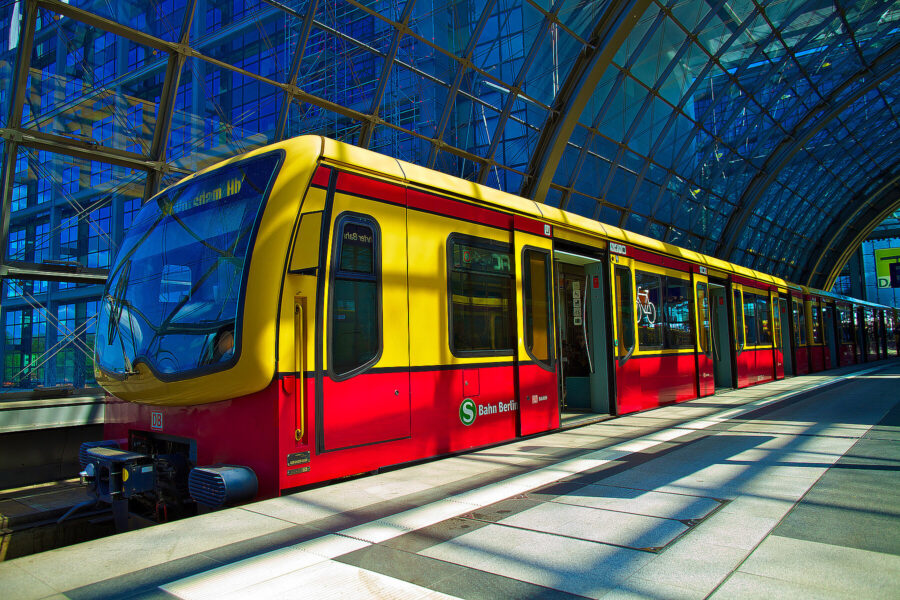
Spend even a little time in Berlin, and you’ll notice how much daily life revolves around the S-Bahn. Still, even the best public transit stumbles—delays, construction, or that dreaded “service interrupted” message. The trick? Know what kinds of issues pop up, where they come from, and, honestly, how you’ll even hear about them.
Types of Service Interruptions
S-Bahn Berlin disruptions come in a few main flavors:
- Delays: Sometimes the train just runs late. Maybe it’s a minute, maybe it feels like forever.
- Cancellations: Sometimes a train vanishes from the timetable—usually because of big problems like weather, strikes, or technical meltdowns.
- Rerouted/Shortened Routes: Construction or faults can mean trains skip stops or stop short of the end. If you’re headed somewhere off the main drag, keep an eye on the digital boards.
Planned timetable changes happen a lot during construction, especially in summer and on weekends. Always check the S-Bahn Berlin website if your route matters. (I learned that the hard way after missing a late-night connection to Lichterfelde last June.)
Common Causes of Disruptions
Most disruptions have pretty clear causes. Here’s what usually goes wrong:
- Technical Issues: Signal failures, broken switches, and trains that just give up. These can grind everything to a halt, even during rush hour.
- Construction Work: Berlin seems to always be upgrading something. Work zones mean single-track traffic or closed platforms for days, sometimes weeks.
- Weather: Heavy snow, wind, or the occasional tree down can slow things to a crawl. Not common, but when it happens, brace yourself.
- Strikes: Every few years, a labor dispute or national rail strike hits. When that happens, you’re better off planning for major delays or finding another way.
Each of these brings its own brand of chaos, and if you’re not ready, you might end up stranded somewhere you never meant to visit.
How Disruptions Are Communicated
So, how do you even know there’s a problem? If you remember just one thing, make it this: real-time info is your best friend.
- Digital Display Boards: Every platform has screens showing upcoming trains and, usually, most disruptions.
- S-Bahn Berlin App and Website: Both list timetable changes, construction, and delays. I check the app almost compulsively before heading out—absolutely worth downloading.
- Public Announcements: Loudspeaker updates fill the stations, but they’re nearly always in German. If your German’s rusty, like mine, watch those screens.
- Social Media: S-Bahn Berlin’s X (formerly Twitter) account posts updates about strikes and major service breaks. Worth a follow if you’re around for a while.
No system is perfect—sometimes the info comes late. Still, knowing where to look can mean catching your next train or spending half an hour in the rain, questioning your life choices.
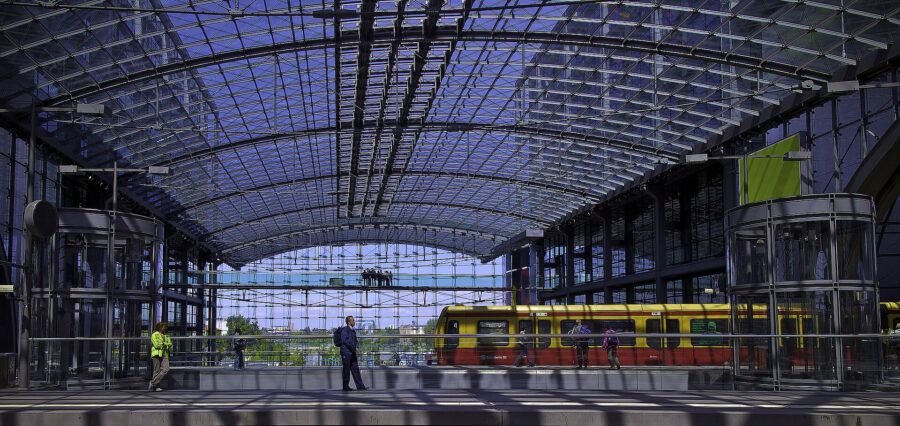
When the S-Bahn stalls (and it will, sooner or later), you’ll need to know your escape routes. Berlin’s public transportation network offers plenty of options, but figuring them out on the fly isn’t always a picnic. The key is knowing what’s nearby and which backup works best for you.
Using U-Bahn, Trams, and Buses

The U-Bahn is usually your fastest backup. S-Bahn and U-Bahn stops are often close together, and there’s nearly always some overlap. Here’s a tip: use the station maps at U-Bahn stops; they’re surprisingly good for showing tram and bus links that don’t always show up in apps.
Buses and trams fill in the gaps, especially at night or in those outer districts where it feels like time stands still. If you get caught during rush hour, don’t let the crowds scare you—buses come often, and you might snag a seat if you board a couple stops away from the madness. I’ve dodged a packed S-Bahn crowd by hopping just two tram stops off my usual route.
Sometimes, it’s honestly fastest to walk a bit to a different line. This is Berlin—everything feels closer with a good playlist and a bit of curiosity.
Planning with Regional Trains and Ferries
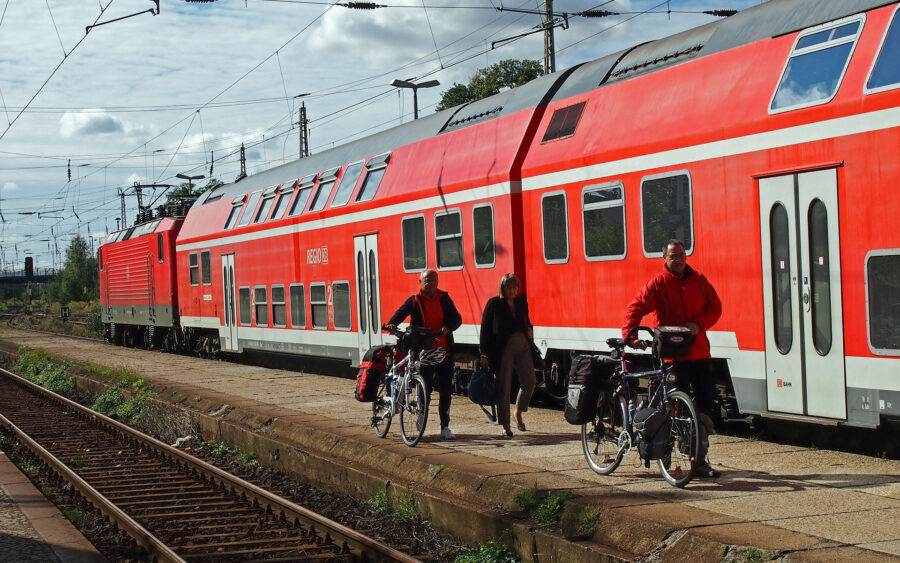
Regional trains—like the RE and RB lines—are a bit of a secret weapon during big S-Bahn outages. Most Berliners don’t realize you can use your AB or ABC BVG ticket on these, as long as you check the route number. The FEX (Airport Express) and regional trains sometimes get you across the city faster than the S-Bahn when things go sideways.
Here’s how I check my options:
- Use DB Navigator and BVG app for different suggestions
- Look for “RB” or “RE” trains at main stations
- Stations like Ostkreuz, Alexanderplatz, and Friedrichstrasse have lots of regional connections
And yes, ferries are a thing. If you find yourself in Köpenick, Wannsee, or near the water, take one. It’s not just practical—sailing the Spree or Müggelsee is a mini-adventure in the middle of your commute. Beats waiting on a crowded platform, no contest.
Utilizing the Tram Network
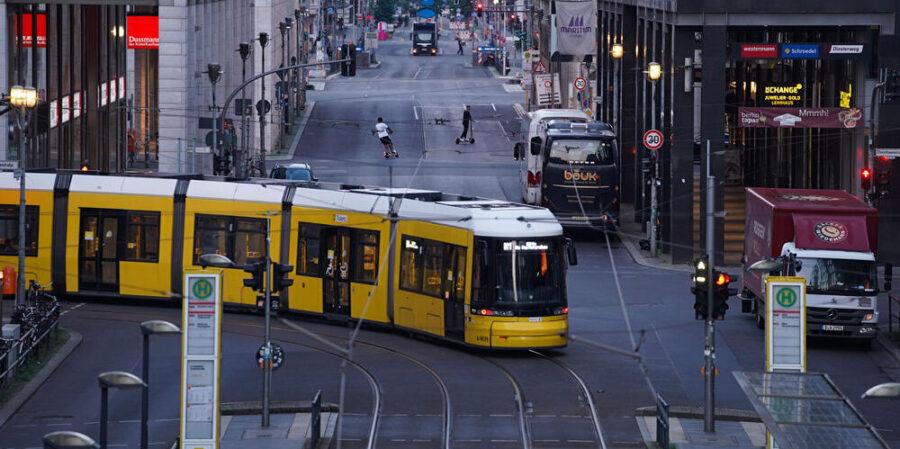
The tram (Straßenbahn) is the unsung hero of eastern Berlin. If your S-Bahn route gets cut—especially east of Alexanderplatz—the trams usually pick up the slack. Sometimes, they even run parallel to S-Bahn lines for a surprising stretch.
Tram stops are easy to spot at street level. I like the low-floor trams: roll your luggage or bike right on, and the onboard screens show every stop ahead. They’ve bailed me out more than once during those infamous signal disruptions near Greifswalder Straße. If you’re on a tram at night—or in winter, when sunset is basically afternoon—keep an eye on the digital displays for service notices.
If you hop off at a spot where trams, buses, and U-Bahn all meet (like Alexanderplatz or Hauptbahnhof), you’ll have the best shot at a quick transfer. And honestly, don’t forget to look up and watch the city roll by; trams are perfect for people-watching.
Smart Journey Planning Tools

Staying on top of S-Bahn disruptions can feel overwhelming, but the right apps and tools make it way easier. You can check for delays, find new routes, and stay updated—all from your phone or laptop.
Leveraging the BVG App and BVG Fahrinfo
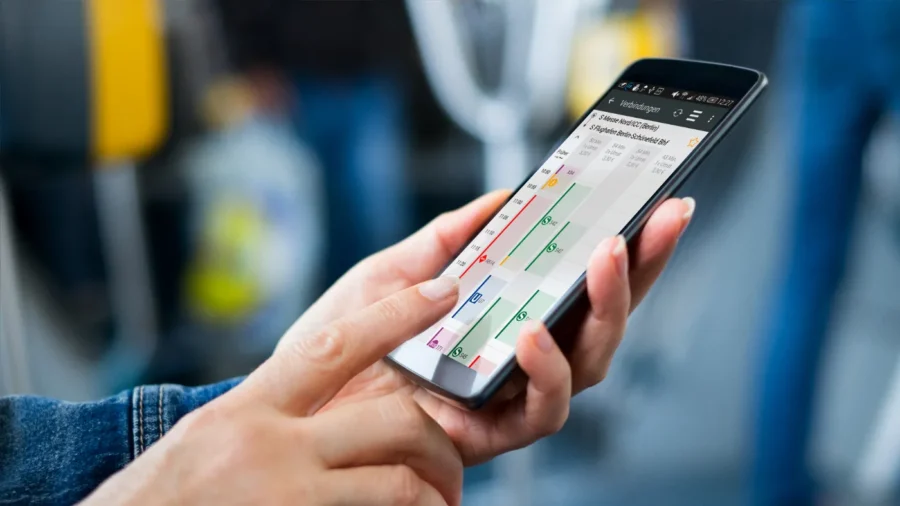
The BVG app and Fahrinfo are your Swiss Army knives for Berlin transport. Enter your start and end points, and in seconds, you’ll get routes that mix S-Bahn, U-Bahn, bus, or tram. Real-time updates are built in, so if something’s delayed or canceled, you’ll see alternate options.
What I like about the BVG app (besides the cheery yellow) is saving favorite journeys. If you have a regular commute, just tap to check the latest. After a major line closure, I dodged the mess simply by following the app’s suggestion—never would’ve thought of that bus-tram combo on my own.
The app can also send push notifications about disruptions on your usual routes. Super handy if you’re not glued to live updates but still want a heads-up before heading out.
| BVG App Features | Benefits |
|---|---|
| Real-time disruptions | Avoid last-minute chaos |
| Save “My routes” | Quicker daily checks |
| Push notifications | No more nasty surprises |
Google Maps is that old standby—especially if you hop between cities a lot. Plug in your destination, and it’ll show you options across all Berlin transit, S-Bahn included. Google updates pretty fast if something’s gone wrong on the tracks (maybe not to the minute like BVG’s own tools, but close enough for most trips).
If your train stops mid-journey or you get booted at an unfamiliar station, just open Maps and let it recalculate. It’ll find new connections, even if you need to hop a bus or grab a scooter for a short stretch. Sometimes it even suggests walking shortcuts you’d never spot on your own.
One thing: if there’s a planned disruption (like weekend repairs), Google Maps usually stays up-to-date, but for sudden problems, BVG’s apps might be faster. Still, for tourists or anyone not obsessed with ultra-local details, Google gets the job done.
BVG Website and Real-Time Updates
If you like a bigger screen or want to double-check a detail, the official BVG website is your friend. The “Plan a Journey” tool covers all public transport—not just S-Bahn. You’ll find maps, notices about scheduled work, and sometimes even which station entrances are open during construction.
I often keep the BVG website open in a browser tab when planning trips or writing. If there’s a big event like a marathon, the site’s live ticker can save you from standing at a platform, wondering where everyone went. You can also download timetables or PDF network maps—super handy for offline planning if your phone dies or reception drops underground.
My pro move: check their disruption page before heading out for any “current incidents” (“störungen” in German). You might not dodge every delay, but it’s way better than getting blindsided when you’re already running late.
Optimizing Ticket Selection and Validation
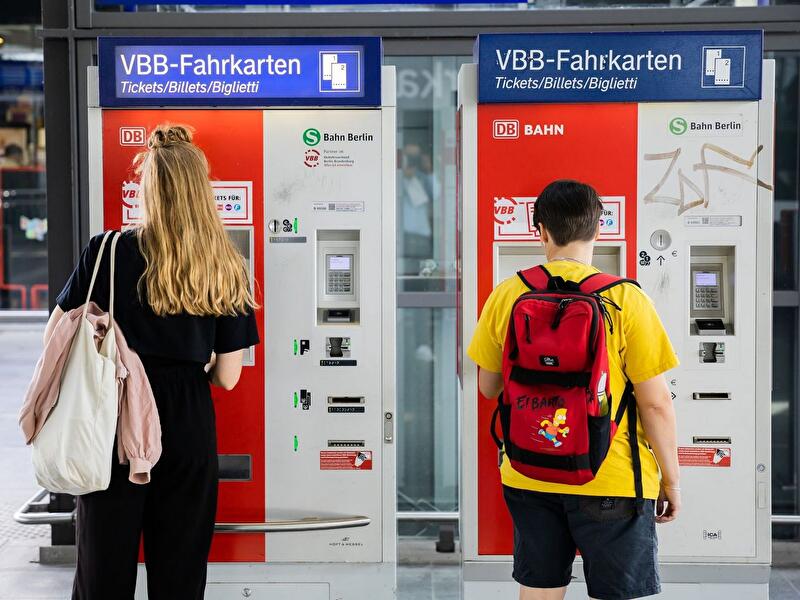
Buying S-Bahn tickets in Berlin can feel confusing, especially during interruptions or construction. When you know your ticket options, understand fare zones, and know how to validate your ticket, you ride with a lot more confidence—and avoid those grumpy ticket inspectors.
Ticket Types and Options
Berlin’s ticket machines? They’ll throw a bunch of choices at you right off the bat. If you just need a one-off ride, grab the single ticket (Einzelfahrschein).
But honestly, day passes usually make a lot more sense if you’re crisscrossing the city or bracing for S-Bahn chaos that’ll force you onto detours and extra rides.
Traveling with friends or your family? The group day ticket is almost always a better deal, and it’s less of a headache to keep track of. If your journey is just a stop or two, try the short trip ticket—but don’t push your luck; ticket inspectors actually love catching those who do.
If you’re hanging around Berlin for a week or more—or just hate planning every move—take a close look at the week or monthly options. The BVG and S-Bahn apps let you buy digital tickets right on your phone, which honestly is a lifesaver when you’re fumbling for coins.
Understanding Fare Zones and Tariff Zones
Let’s get into the weeds for a second, because this is the stuff that’ll save your wallet. Berlin’s public transport splits the city into three main tariff zones: A, B, and C.
- Zone A is the heart of Berlin, inside the Ringbahn.
- Zone B stretches from the Ringbahn out to the city’s edge.
- Zone C covers the outskirts—think Potsdam, the airport, and a few sleepy villages.
You need a ticket that covers every zone you’ll cross. For example, Berlin-Brandenburg Airport sits way out in Zone C, so don’t try to cheap out with just an AB ticket.
Here’s a quick cheat sheet:
| Zone Combo | Use If… |
|---|---|
| AB | Staying within city core |
| BC | Going to suburbs or edge |
| ABC | Reaching airport/towns |
Inspectors check tickets constantly and don’t mess around with fines, so double-check your zones before you board.
Best Practices for Validating Your Ticket
This one trips up more visitors than you’d think (and, honestly, a few locals too). When you buy S-Bahn tickets from machines, you still need to stamp them at those little yellow or red boxes on the platform before you hop on.
Make sure you feed it in print side first. You’ll hear a click, and suddenly your ticket’s got a time and station printed on it—don’t lose that, it’s your proof. If you forget, inspectors won’t care if you play the clueless tourist.
Day and group tickets only need one validation, so don’t stress about stamping every time you change trains. With digital tickets from the BVG or S-Bahn apps, you’re good to go the moment you buy.
If you realize you forgot to validate and spot inspectors, just be upfront. Trying to sneak a stamp at the last second rarely works out, and Berliners definitely notice.
Money-Saving Tips and Discounts
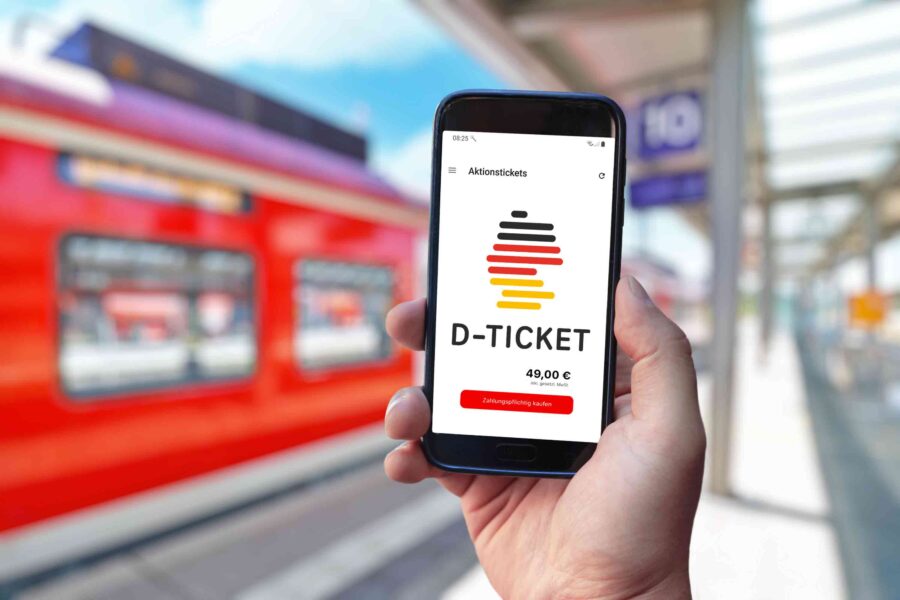
Berlin’s public transport can eat up your budget if you don’t watch how you buy tickets—especially when S-Bahn disruptions force you onto extra routes. But there are clever ways to save, if you know where to look.
Making the Most of Deutschland Ticket and WelcomeCard
If you’re planning to bounce around Berlin or even hop to other German cities, the Deutschland Ticket is a no-brainer. For a monthly flat rate, you get almost unlimited rides on local buses, S-Bahn, and U-Bahn lines all over Germany.
Just remember, it’s a subscription, so you need to sign up online and cancel when you’re done—easy to forget, and suddenly you’ve paid for an extra month (ask me how I know).
For shorter visits, the Berlin WelcomeCard is a solid pick. You’ll get unlimited rides in your chosen zones, plus discounts at museums, tours, and even the odd restaurant. If S-Bahn delays throw you off, this pass means you can switch transport modes without thinking twice.
There’s even a Welcome Card that covers Potsdam, which is perfect if you’re planning those palace day trips.
Single Tickets Versus Tageskarte
A single ticket works fine if you’re just zipping somewhere and back, maybe for a quick lunch or errand. But S-Bahn disruptions can turn a simple trip into a multi-transfer adventure, and those single tickets add up fast.
That’s why I almost always tell people to pick up a Tageskarte (day ticket). With a Tageskarte, you can ride as much as you want in your chosen zones until 3 a.m. the next day.
It’s stress-free—no worrying about extra charges if you get rerouted or need to hop on a replacement bus. Kids pay less, so families save even more. If you’re exploring multiple neighborhoods, a day pass just makes sense.
Quick comparison table:
| Ticket Type | Best For | Flexibility |
|---|---|---|
| Single Ticket | 1-2 rides/day | Low |
| Tageskarte (Day) | 3+ rides/day | High |
How to Use Monthly Passes and Travel Zones
If you’re staying in Berlin for a while, the monthly pass is a game changer, but you have to get the zones right. Berlin’s divided into AB, BC, or ABC—most travelers stick to AB, which covers nearly everything you’d want to see.
If you venture out to Schönefeld or Potsdam, you’ll need ABC. Get it wrong and, well, ticket inspectors don’t exactly hand out warnings. I learned that the hard way.
Monthly passes save a lot if you’re using public transport daily, especially when S-Bahn delays push you onto other routes. Just make sure your pass shows the correct zones, whether it’s a paper ticket or in your BVG app.
You can’t transfer these passes to someone else, so don’t try to hand yours off at the end of your trip.
One more tip: check for discounts if you’re a student, senior, or traveling with kids. Monthly passes sometimes cost less than you’d think, especially if you’re zigzagging all over town during S-Bahn chaos.
Ensuring Safety and Comfort While Traveling
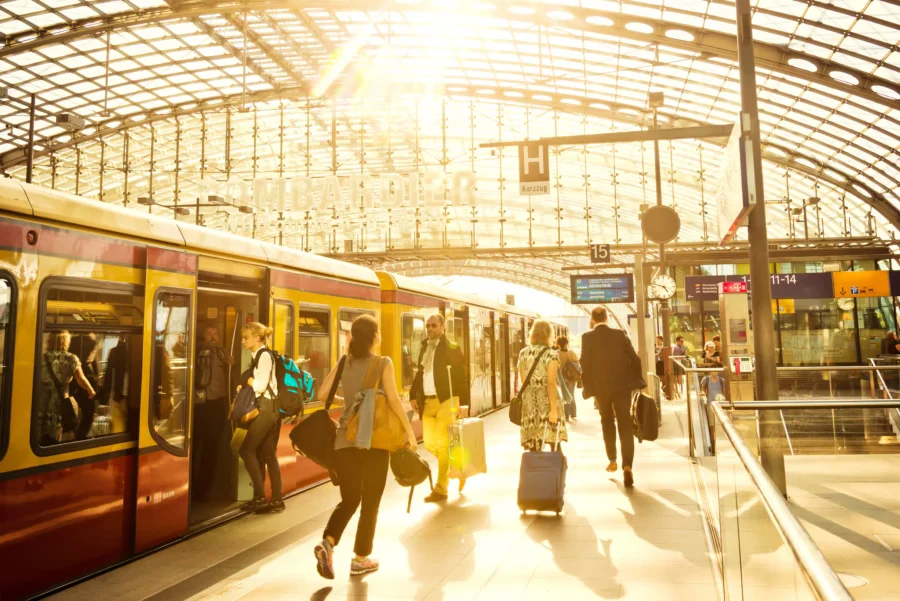
Staying safe and comfortable on Berlin’s S-Bahn can get tricky, especially when disruptions crowd the trains. But with a few habits and a little planning, you’ll travel smarter and with a lot less stress.
Tips for Crowded Situations
If you’ve ever crammed into an S-Bahn at rush hour, you know the awkward shuffle. When the train’s packed, stand near the doors if you’re getting off soon, but don’t block them—Berliners have no patience for that.
Hold onto the poles or hand straps—the sudden stops can really catch you off guard. Move down the carriage if you can; you’ll get more space and fewer dirty looks.
If you’re with someone, agree on a meeting spot at your destination in case you get separated. Keep your headphones at a volume where you can still hear announcements—disruptions pop up without warning.
If you feel uncomfortable, don’t hesitate to use the call button by the doors. It connects right to security, and honestly, I’d rather be safe than sorry.
Keeping Your Belongings Secure
Pickpockets love busy stations and crowded trains, especially when everyone’s distracted. Zip up your bags—wearing a crossbody or backpack in front helps a lot.
Honestly, I swear by packing light; less stuff means less to lose. Stash your wallet, phone, and tickets in inside pockets.
I’ve seen too many travelers fumble for tickets and accidentally show off their wallets—don’t make it easy for thieves. A small pouch under your shirt for passports and cards is simple but effective.
Invest in some travel gear like anti-theft bags or luggage locks if you’re carrying more. I always toss a mini flashlight in my bag—the S-Bahn can get weirdly dark if there’s a power cut.
If you get distracted, just pause and check your stuff before moving on. That one habit has saved me a ton of hassle.
Exploring Berlin and Beyond Despite Disruptions
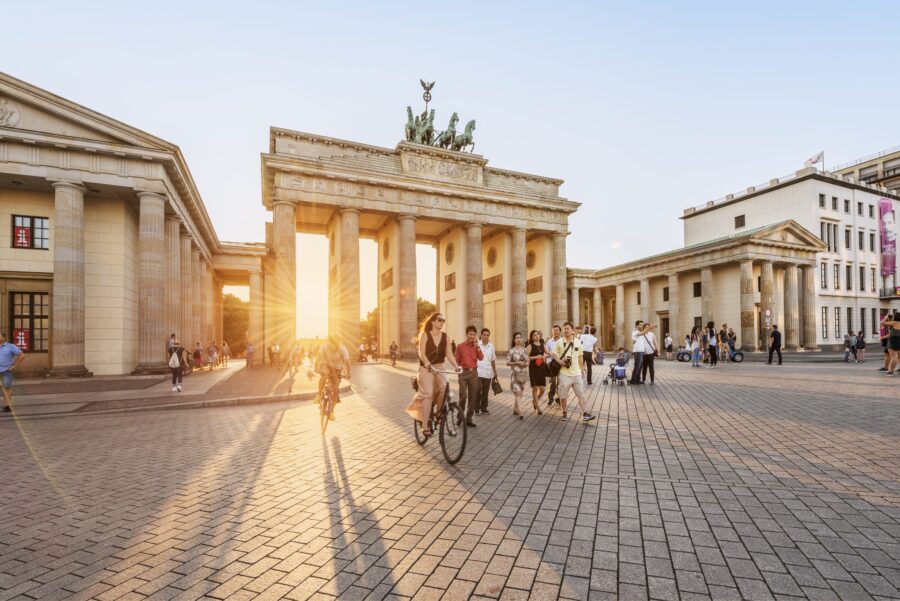
Even when the S-Bahn gets messy, you can still make the most of Berlin and its best day trips. Flexibility and a little advance planning go a long way—sometimes the detour is where the adventure starts.
Sightseeing and Day Trips Around Berlin
If an S-Bahn disruption leaves you stranded, don’t stress—Berlin’s U-Bahn, trams, and buses usually fill the gaps. You’d be surprised how many hidden gems you stumble on when you’re rerouted.
I once found a tiny street market near Hackescher Markt because the S3 was delayed. Sometimes, the best parts of the day come from those unexpected detours.
Download a transit app so you’re not left guessing which platform to run to next. Bikes and e-scooters can be a fun backup, especially for getting around places like Tiergarten or Museum Island.
If your plans get scrambled, use a booking service to find things to do nearby—no need to waste the afternoon.
Visiting Potsdam and Sanssouci Palace

Normally, you’d just take the S-Bahn to Potsdam, but if there’s a disruption, regional trains like the RE1 from Hauptbahnhof are your best bet. Always check live updates so you don’t end up waiting on the wrong platform.
Once you reach Potsdam, a quick tram or bus takes you to Sanssouci Palace and those sprawling gardens. The palaces? Absolutely worth it.
Even if the trains are crowded or delayed, wandering through the park with its fountains and peacocks feels like time travel. If you’re into guided tours, it’s easy to book day trips that include transport, so you don’t have to juggle train changes.
Bring snacks, though! The deeper you go into the park, the fewer options you’ll find, and that’s when hunger sneaks up. The upside? You’ll have some corners of the gardens almost to yourself.
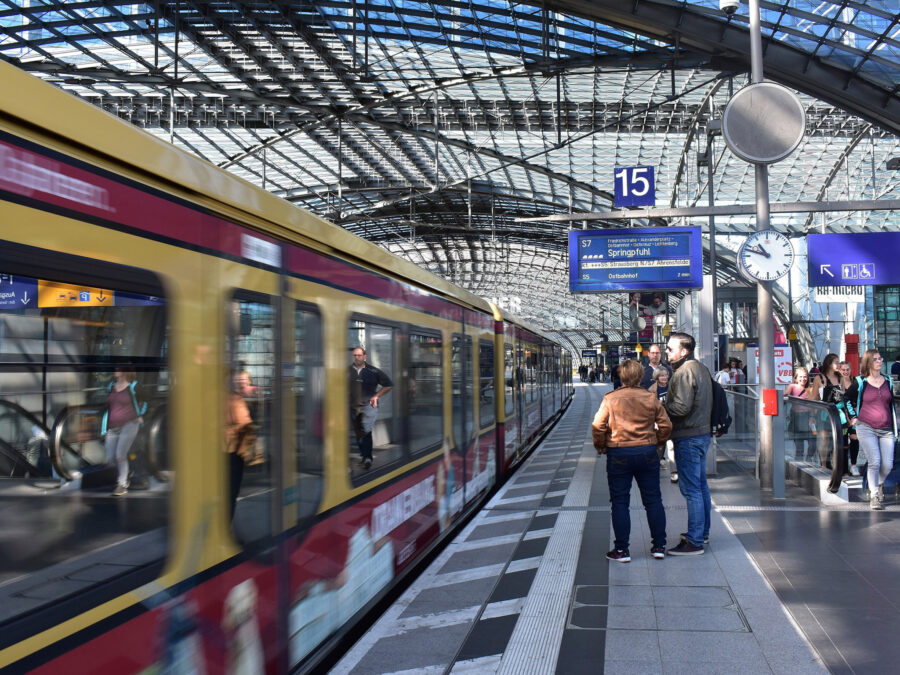
Berlin’s public transport can throw you for a loop when the S-Bahn stops running. Knowing your alternatives—and where to find them—can mean the difference between getting stuck and breezing through like a local.
Understanding Bus Routes During S-Bahn Issues
When S-Bahn lines go down, buses step in to save the day. Look for Ersatzverkehr (replacement service) buses at major S-Bahn stations.
You’ll spot yellow BVG buses with signs in the window showing which S-Bahn stops they’re covering. But don’t just hop on the first bus—sometimes it’s not the one you need.
Check the digital displays or use the BVG or Jelbi app for live arrivals and any special replacement routes. I always screenshot the route before heading underground, just in case cell service disappears.
Ask the driver or a local if you’re unsure. Berliners are blunt, but if you try a little German—even just “S-Bahn kaputt?” with a shrug—you’ll usually get a helpful answer.
Sometimes regular buses stick to their usual route and won’t get you where you’re going, so double-check the route number and final destination.
Quick tips:
- Check both the front and side of the bus for route info.
- Replacement buses sometimes stop at temporary locations—follow the crowds, but glance at a map.
- Watch for paper signs near stations; they often have info you won’t find in the apps.
Tips for Using Underground Trains
When you can’t count on the S-Bahn, the U-Bahn is usually your next move. Here’s the upside: U-Bahn lines mostly run on their own tracks, so it’s rare for both systems to melt down at the same time.
Rush hour, though? It gets wild. Some U-Bahn stations can feel annoyingly far from the S-Bahn, so plan your detours accordingly.
Scout out which U-Bahn lines shadow your go-to S-Bahn stops. For me, the U2 is a lifesaver—it mirrors a lot of the central S-Bahn, so I pivot to it often.
If the train’s packed, just breathe. Sometimes I hang back and let a couple sardine cans pass; after a train or two, you can usually snag a spot without elbow wars.
If you’re new to the route, grab a seat by the door. Berlin’s U-Bahn announcements can get lost in the noise, and honestly, I’ve missed my stop more than once just because I couldn’t hear a thing.
Count stops, or better yet, keep your phone’s GPS open. If you need to switch lines underground, those yellow U signs are your best friend—don’t get distracted by the S symbols.
A few quick underground hacks:
- Double-check transfer stations—some are confusing enough to make you question reality.
- Watch for surprise platform changes; the electronic boards will update, but not always with much warning.
- BVG staff have seen it all—don’t hesitate to ask for help, even if you feel clueless. They’re used to it.
Bring some patience, maybe a snack, and you’ll start to feel like a pro navigating Berlin’s public transport, even when the S-Bahn throws a curveball.
Frequently Asked Questions
When Berlin’s S-Bahn goes off the rails, your plans can unravel fast. But there are ways to adapt—locals have a few tricks, and some handy apps can genuinely save your day.
What are the best alternative modes of transport during a Berlin S-Bahn disruption?
Trams (those yellow ones) and city buses often come to the rescue. The U-Bahn usually keeps rolling, even when the S-Bahn is out of commission.
Sometimes, the S-Bahn runs replacement buses (SEV) along the broken route, but I’ll be honest—these can crawl when traffic’s bad.
Don’t forget bike rentals. Sometimes, just walking is faster if your destination isn’t far. Taxis and rideshares are there too, but I only grab them if I’m desperate or it’s the middle of the night.
How can one stay updated on the latest S-Bahn announcements and disruptions?
I always check S-Bahn Berlin’s official website first—they post big alerts right at the top if there’s major trouble. For faster updates, I follow their Twitter (or X) account; they’re usually ahead of the curve, sometimes even before the station announcements.
You’ll spot updates on the big boards in major stations, but those crowds can be a pain. Your phone is usually the better bet.
Are there any mobile apps or tools recommended for real-time S-Bahn disruption alerts in Berlin?
The BVG app (“Fahrinfo Berlin”) is my go-to—it’s free, covers all public transport, and lets you set up routes for push notifications about delays.
Google Maps actually does a decent job in Berlin; sometimes it reroutes me faster than the official apps. If you know some German (or want a challenge), grab the S-Bahn’s own app too—it’s straight from the source.
And if you’re on Telegram, check out local disruption alert channels. It sounds a bit nerdy, but these folks often know what’s up before anyone else.
What’s the most efficient way to plan your journey when unexpected S-Bahn engineering works take place?
Check your app right before you leave, even if you looked earlier—Berlin’s transport situation changes in a flash, especially with all the construction.
Always have a backup route in mind. Sometimes hopping onto a tram or a different U-Bahn line around the closure saves a ton of time.
Honestly, when in doubt, just ask a Berliner nearby—they’ll usually know a shortcut or have the latest scoop that apps haven’t caught yet.
How do Berliners typically deal with sudden train delays or police operations affecting the S-Bahn?
Locals might grumble, but they instantly start looking for the next best option—bus, bike, U-Bahn, whatever gets them moving. There’s no dramatic meltdown; Berliners just get on with it.
Sometimes you’ll see people clustering, swapping updates about which routes are still open. It’s a little moment of solidarity—everyone’s in the same boat, at least until they scatter in different directions.
Bring a fully charged phone—trust me, you’ll want it. Wi-Fi’s gotten better at some stations, but you can’t count on it everywhere.
Keep the BVG app open; it’s a lifesaver when things go sideways. Spotting “SEV” signs or those bright yellow buses by the curb? That’s your clue: S-Bahn’s down, and buses are pinch-hitting.
If your German’s a bit rusty (or nonexistent), look for station staff in those unmistakable red vests. Most of them speak at least a little English, and they’ll usually help you out if you ask.
Don’t stress if you get stuck. Sometimes, it’s worth ducking into a nearby café, grabbing a coffee, and taking a breather. Honestly, some of the most memorable Berlin stories begin with a train delay. Isn’t that half the fun of travel anyway?



